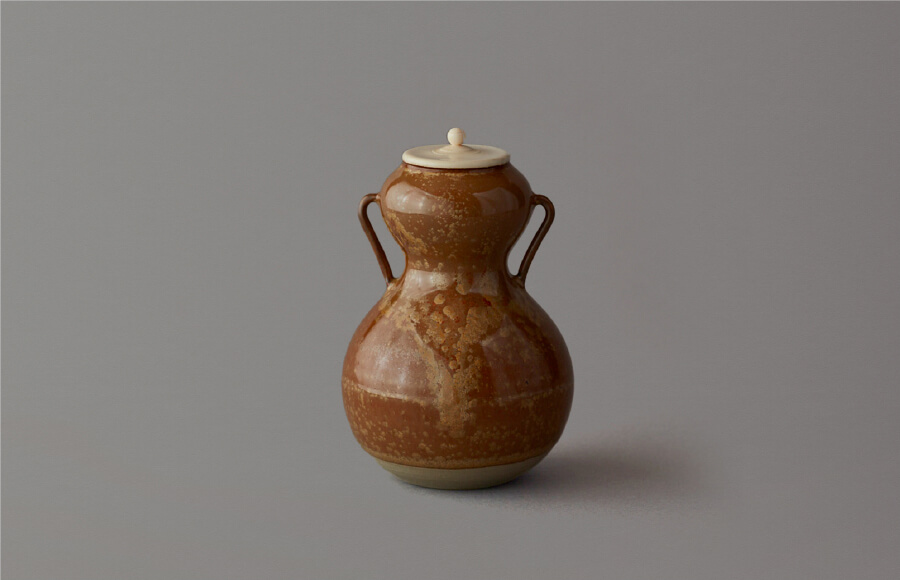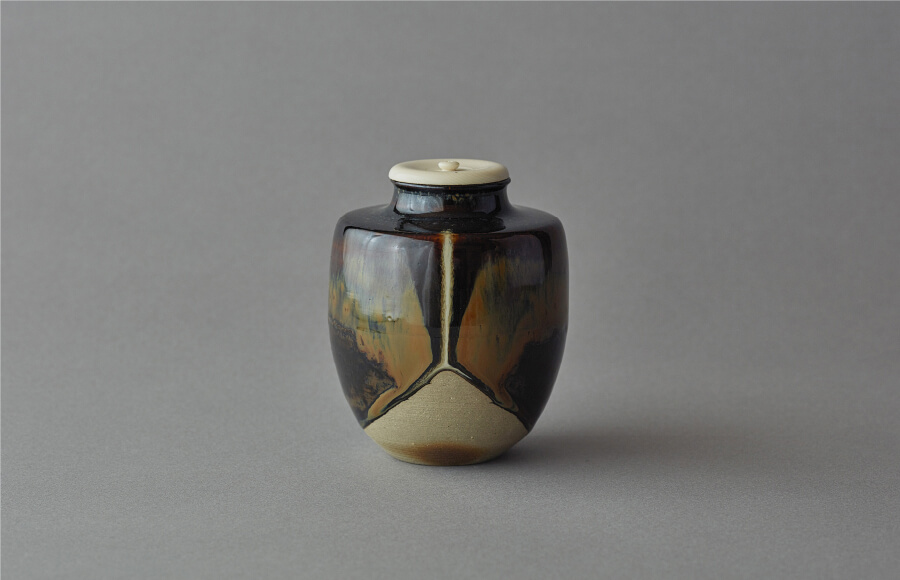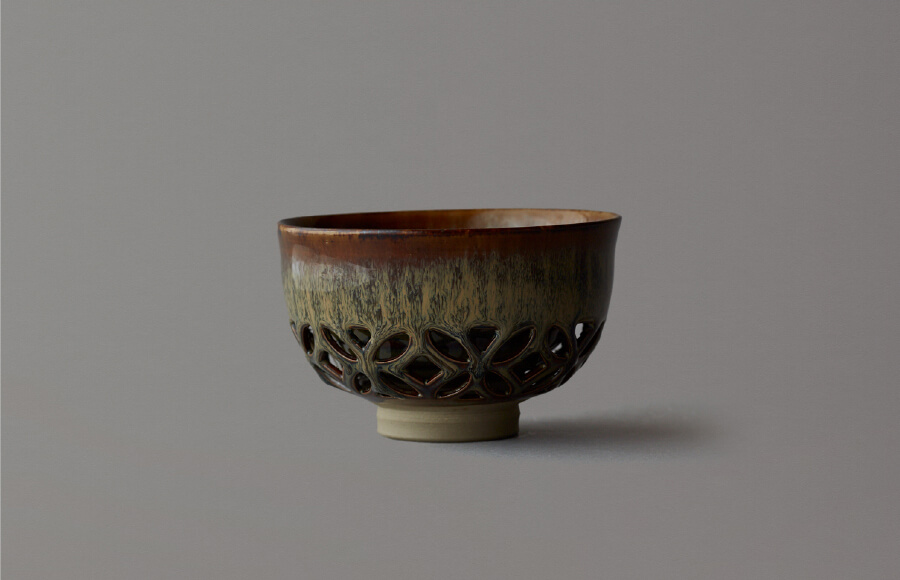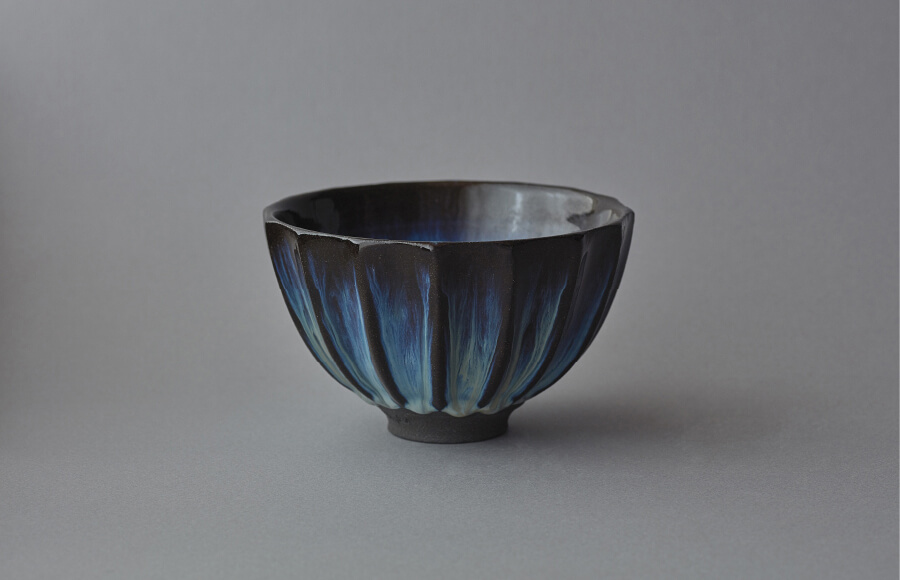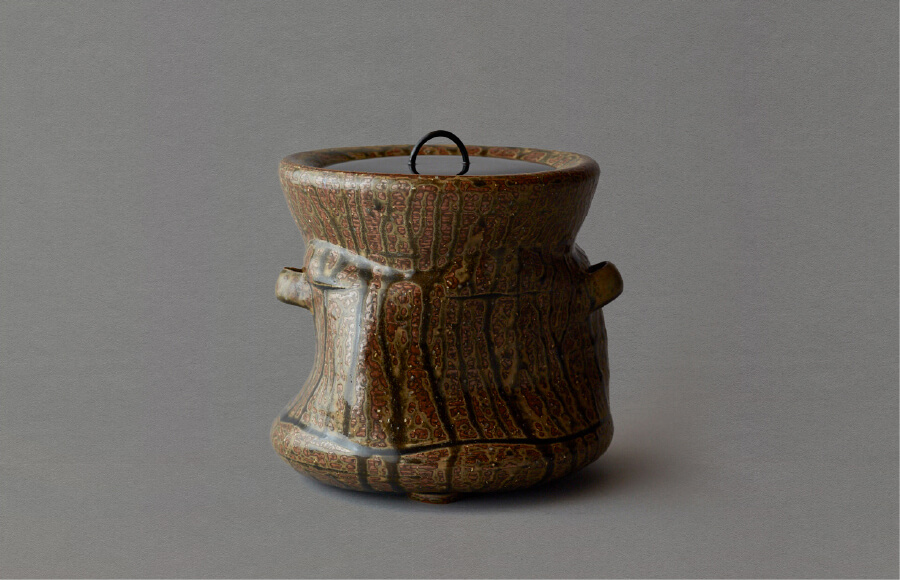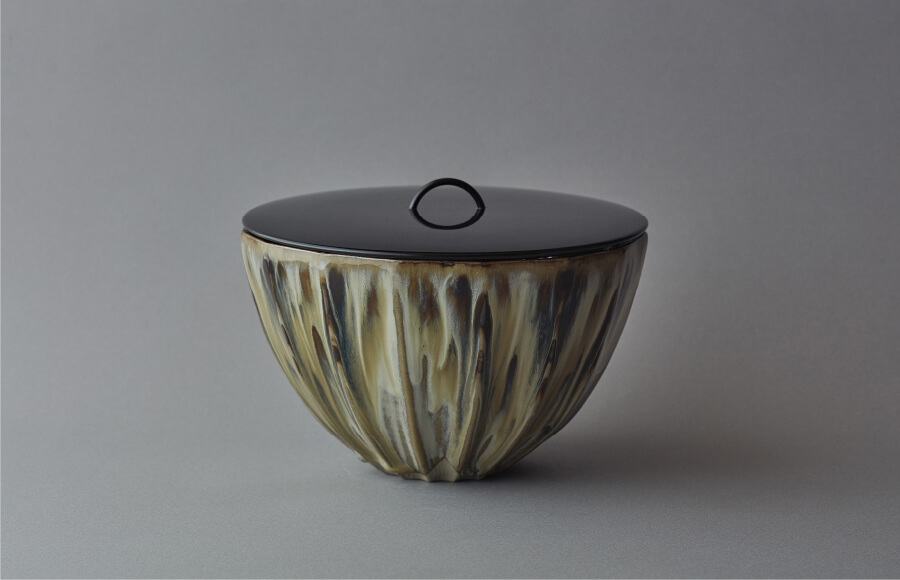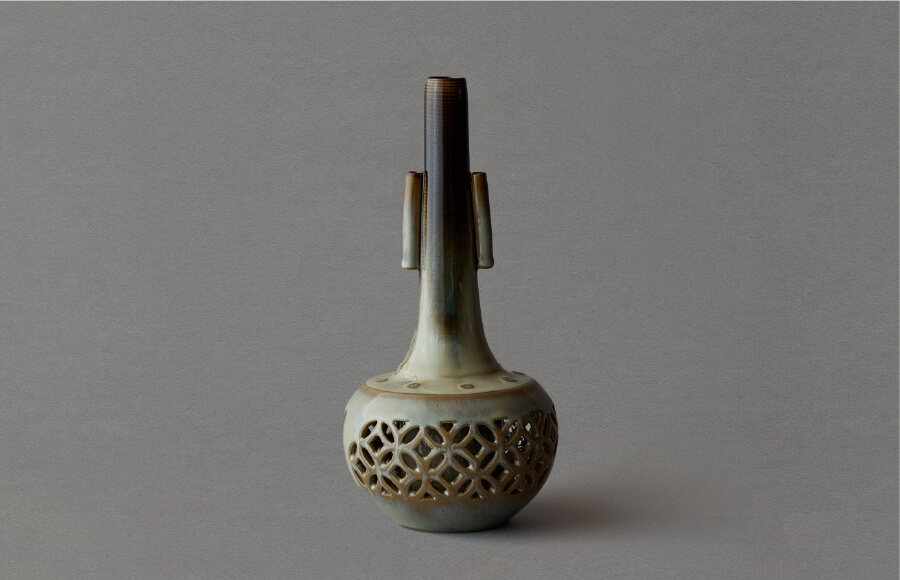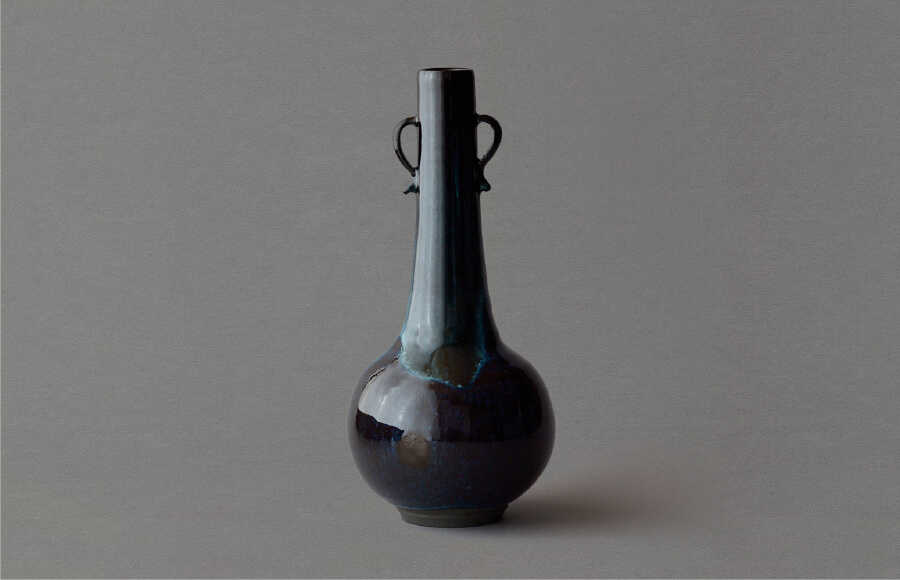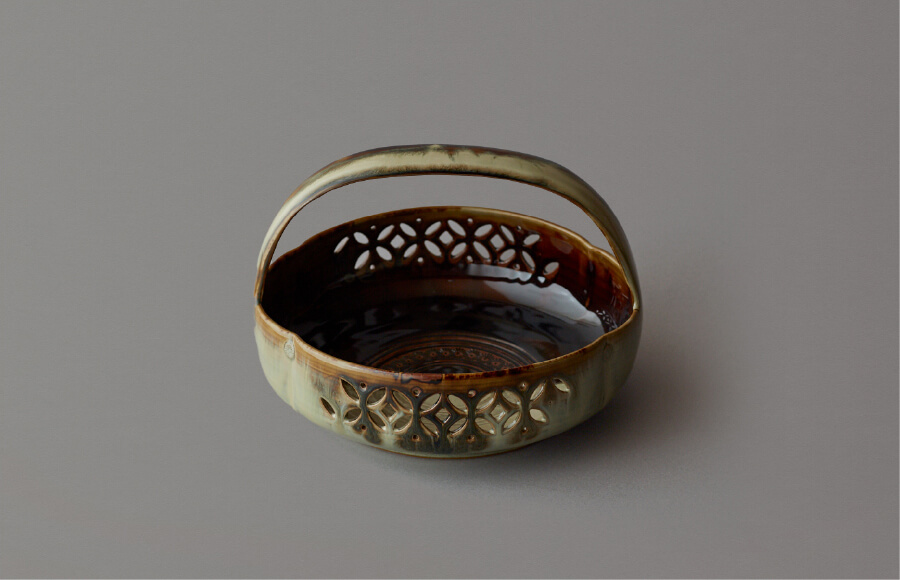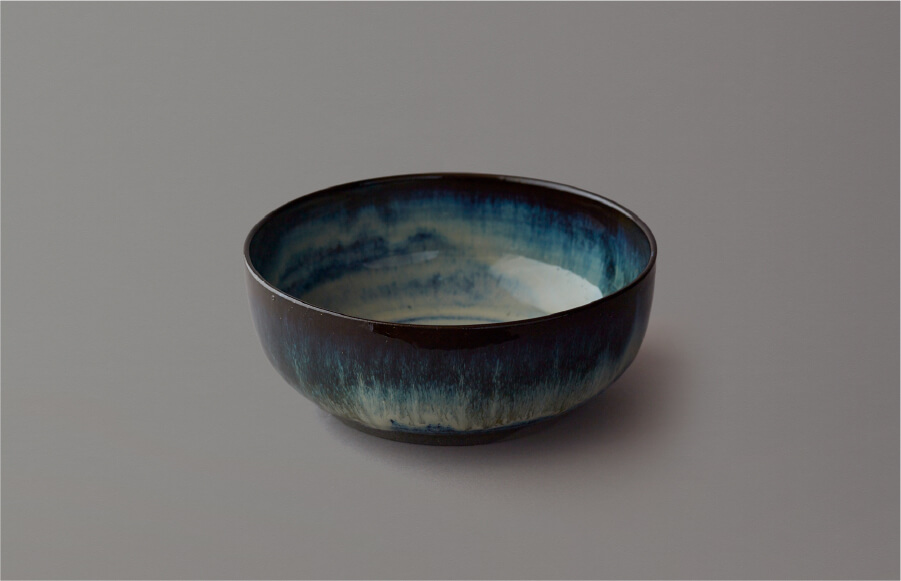Tradition embodied in works of art
The Art of Tea
Ceremony Ceramics
Tea ceremony utensils,
art equipped
with practical beauty.
The tea ceremony allows guests plenty of time to thoroughly appreciate tea utensils. To feel the touch and the weight of a tea caddy or tea bowl in the hands, or to gaze closely at the figure of a flower vase or water container. The tea utensils that the ceremony host prepares on any particular day are chosen in accordance with the season and the spirit of the times, and each conveys its own story. Like this, they play an important role in deepening the conversation between host and guests. The Miraku Kiln of Takatori ware strives to create tea utensils befitting such occasions—works of art that can be enjoyed by both host and guests, and that unite them in mind and spirit.
Tea caddy
The tea caddy is considered the most prestigious of all tea utensils. Even in catalogs of famous tea utensils, the tea caddy always takes pride of place. Typically, in the first session of a formal tea ceremony, a kaiseki meal (served on a tray in one or more courses) is served to the guests, after which there is a break. The climax of the ceremony comes in the goza (second session) with the serving of koicha (“thick tea”). Tea caddies are containers used to store this koicha.
Tea bowl
The tea bowl plays a central role in the tea ceremony. After copies of Chinese and Korean tea bowls became fashionable in Japan, potters started to produce Japanese-style tea bowls that reflected the spirit of Sengoku period warlords. Please enjoy the form and glazing aesthetics of Takatori ware, which draws on this Japanese tradition, as well as the lightness of its touch, made possible by its distinctively thin structure.
Water container
Water containers (mizusashi) are a given a prominent place and presence throughout tea ceremonies, to draw the attention of the guests. Takatori ware water containers have such a thin structure that even when filled with water they do not become excessively heavy.
Flower vase
In a tranquil tea room, only flowers can evoke the transience and vibrant charm of life. Sen no Rikyu famously taught that flowers should be arranged as if in the wild. The basic style of arrangement, nageire (“throw in”), tries to take advantage of the natural forms of the available flowers. Takatori ware vases draw out the essential beauty of flowers through the use of natural glazes in copper, yellow, green-blue, black, and other hues.
Confectionery bowl
A confectionery bowl is typically selected to harmonize with other tea utensils and with the color and shape of the sweets being served, the season, and other factors. In the Takatori tradition, confectionery bowls are created in the particular shapes preferred by different tea ceremony schools. They are typically created without excessively intricate design, so as to maintain a distinctive air, even within an ambience of elegance.


















